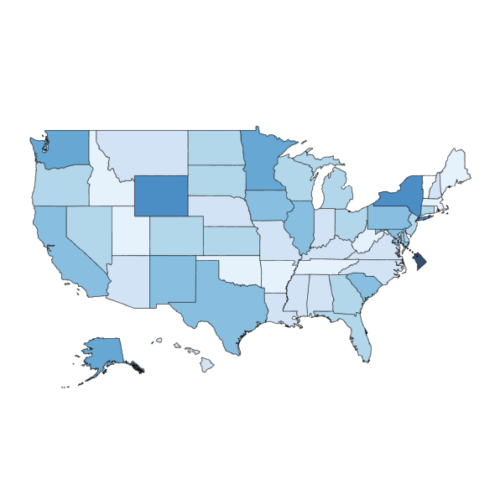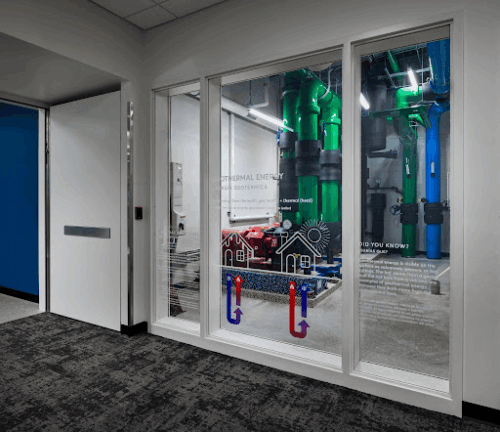- Home
- Blog Posts
- Ground-Source Heat Pumps: A Healthy and Affordable HVAC Choice for K-12 Schools
Ground-Source Heat Pumps: A Healthy and Affordable HVAC Choice for K-12 Schools
Written by UndauntedK12,
Smarter HVAC Choices, Healthier Schools
How schools heat and cool their buildings affects student health, learning, and costs. As temperatures rise, legacy heating and cooling systems struggle to keep up – leading to uncomfortable classrooms, lower test scores, and school closures. Outdated, inefficient systems degrade air quality and drive up energy costs.
A solution is to transition to modern heating, ventilation, and air conditioning (HVAC) systems called heat pumps. These systems move heat rather than combust fossil fuels to make heat. To heat a building, heat pumps transfer heat from an external source – air, water, or the ground – indoors. To cool a building, they do the opposite, expelling heat from indoors to outdoors.
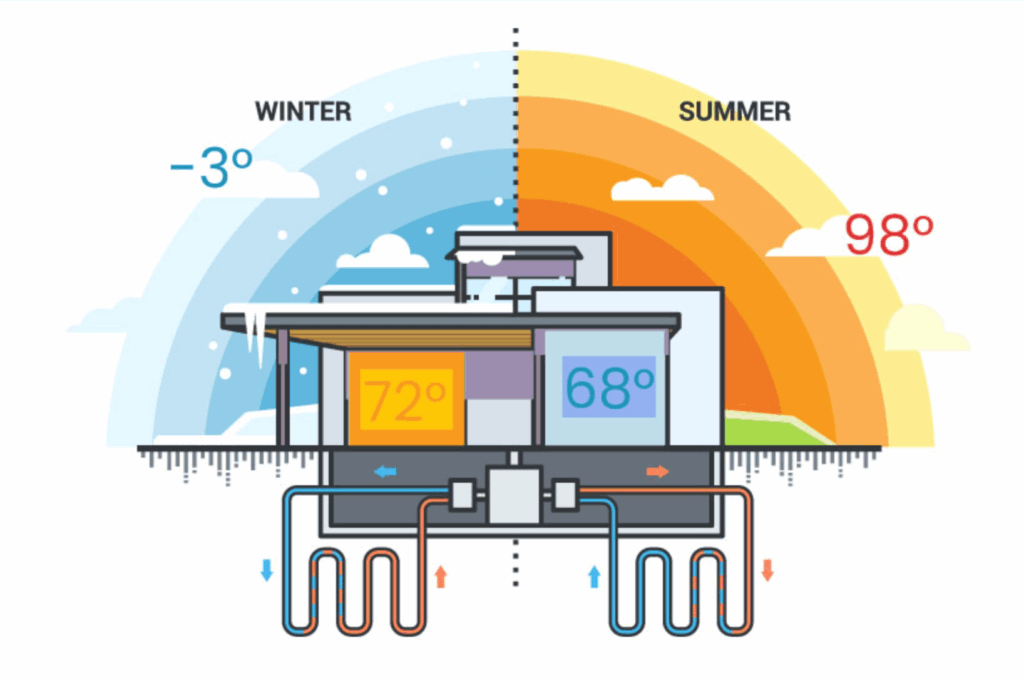
Heat pumps promote healthier, safer, and more resilient learning environments. With extreme heat increasing nationwide, schools are dealing with overheated classrooms and need reliable cooling. Heat pumps meet this need by providing cooling that is both cost-effective and quiet. In addition, heat pumps do not release unhealthy particulates and gases on-site or introduce flammable fuels into the building, improving air quality and safety.
As all-electric systems, heat pumps can be powered by affordable solar power. When this solar is paired with battery storage, the heat pumps can continue to heat and cool buildings during power outages. This allows schools to provide shelter for communities and protects the building from damage. Because heat pumps do not combust fossil fuels, they can also reduce a school’s greenhouse gas emissions, contributing to cleaner air and mitigating climate change.
Six Benefits of All-Electric, High-Performance HVAC Systems

Heat pumps can also reduce energy use and operating costs. Properly designed and installed, they can improve efficiency, operate reliably in hot and cold climates, and, particularly with ground-source heat pumps, simplify and reduce the cost of maintenance.
Because of this, heat pumps may have lower “life-cycle costs” – the costs to install, operate, and maintain equipment over an extended period of time – compared to other HVAC choices. Schools can work with partners to evaluate costs through a life-cycle cost analysis (LCCA) and select the most affordable HVAC option. Heat pumps may be ideal for Energy Savings Performance Contracts, a procurement method where districts can pay for facility improvements with “avoided costs” generated over time.
The Town of Arlington, Massachusetts issued a Request for Proposal (RFP) to contract services to develop a plan to electrify and improve air quality at six elementary schools. Engineering firm CMTA developed a plan informed by an LCCA and found that ground-source heat pumps were the most affordable HVAC option at all schools.
Example of a Life Cycle Cost Analysis (LCCA)
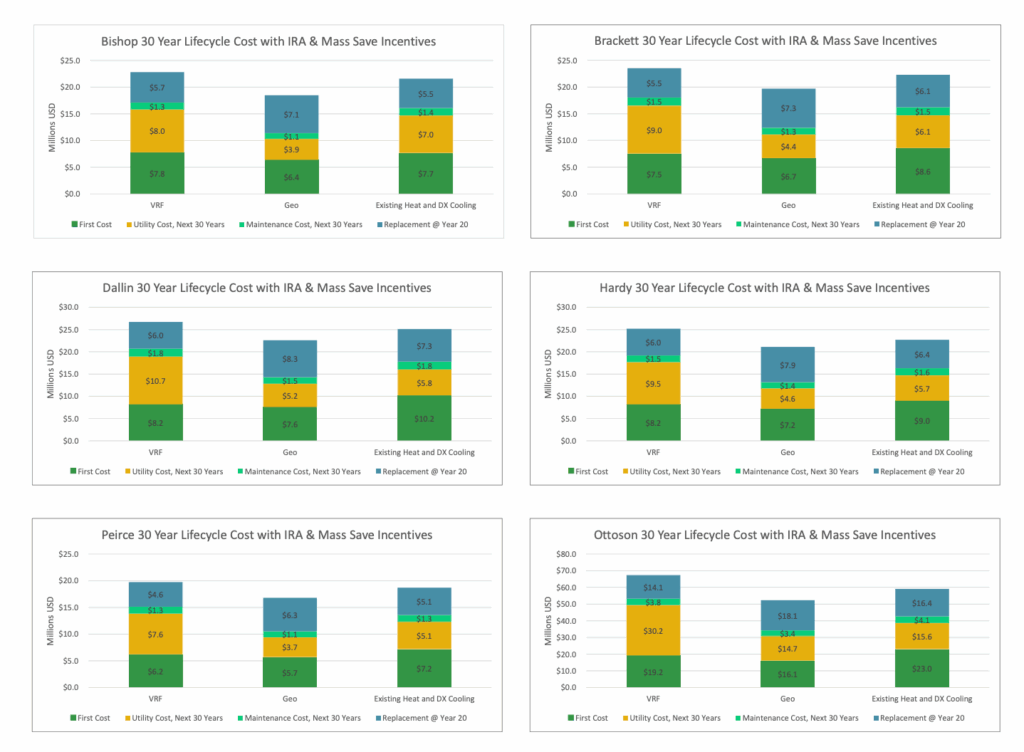
The Opportunity with Ground-Source Heat Pumps

Despite lower life-cycle costs, installing heat pumps can be expensive. Tight budgets may push district leaders to select the cheapest HVAC system to install, even if it will cost more over time.
Federal tax credits available for ground-source heat pumps (GSHPs) can help district leaders select systems that will deliver long-term efficiency and meet capital budget constraints. Districts installing GSHPs can claim the Investment Tax Credit (Section 48) and receive a cash reimbursement for up to 50% of the installation cost. This credit is available for all GSHP projects that start construction by December 31, 2034.
With the federal incentive and proven long-term savings, GSHPs are an alternative to legacy HVAC systems, keeping classrooms comfortable, saving schools money, and improving air quality.
Schools Leading on Ground-Source Heat Pumps
Across the country, districts of varying sizes and in different climates are adopting ground-source heat pumps (GSHPs) and are using federal incentives to make the transition.
North Fayette Valley Community School District, Iowa
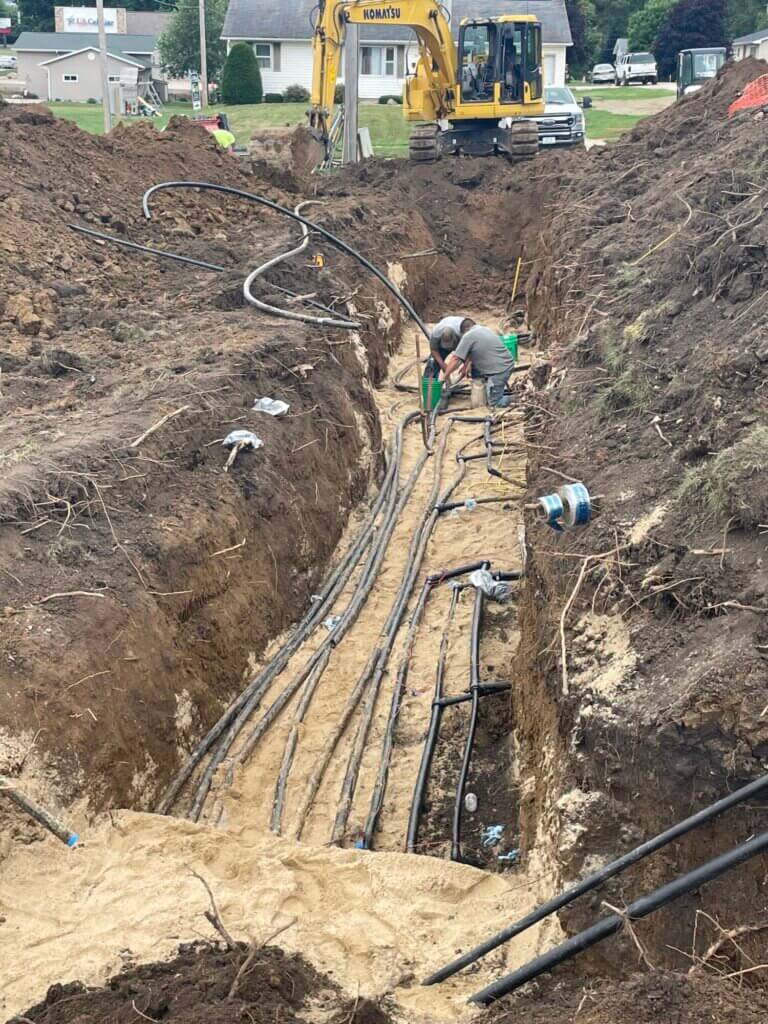
In July 2020, Superintendent of North Fayette Valley Community School District, Joe Griffith, recognized a potential threat to the safety of students and staff at West Union Elementary School: an aging, 1957 steam boiler system.
Concerned for the safety of students and a lack of heating, the district installed a GSHP system with a local HVAC contractor. They then claimed the Investment Tax Credit with assistance from Energy Tax Savers, a tax firm that helps school districts determine eligibility and complete filings. Receiving a $873,483 check, the district became one of the first school districts to receive a reimbursement through Elective Pay.
Seattle Public Schools, Washington

In December 2024, Seattle Public Schools earned a $7,970,439 check for the installation of GSHPs at three new elementary schools. The district contracted with construction firms that provided apprentices and upheld “high-road” labor standards. By meeting prevailing wage and apprenticeship and domestic content requirements, the district increased their reimbursement.
As of October 2025, Seattle Public Schools has GSHPs as the primary heating and cooling system in 22 school buildings. These systems contribute toward a reduction of the district’s energy use intensity by 77% and lower costs. Seattle’s approach showcases how a large, urban district can maximize the tax credit for cost-saving upgrades, while boosting the local economy.
Ida Public Schools, Michigan
The 49-year old gas boilers in Ida Public Schools Junior / Senior High School were on the verge of failing. Without heat, students would need to be relocated and the entirety of the building would be at risk.
Looming behind this acute issue, was a chronic one. The building desperately needed cooling, with classrooms intolerably hot in the warmer seasons and the gym nearing 100 degrees on graduation day.
After two failed bond measures, Superintendent David Eack proposed an 8-year “sinking fund” that would replace the aging HVAC system with a GSHP and make other improvements. The district emphasized that switching to GSHPs would also bring cooling and highlighted the opportunity for a 40% discount on the costs of this necessary upgrade by claiming the tax credit.

Ida Public Schools worked with Veregy, a national energy services company specializing in K-12 projects, to scope the work, assess options, estimate costs, and complete the work. Installing the GSHP was estimated to cost $7.8 million, exceeding the $6.2 million for a “like-for-like”gas boiler replacement. However, with the estimated $3.12 million cash reimbursement from the tax credit taken into consideration, the net cost of $4.68 for the GSHP system made it the most affordable choice – and provided an additional benefit: cool classrooms.
The case was a compelling one and the sinking fund was approved in November 2023, marking the first time local voters approved increased funding for the district since 1965.
In September 2025, students and educators returned to the newly improved building and Ida Public Schools Superintendent David Eack got an earful. “It’s not often that Superintendents hear compliments about our facilities. But this back-to-school was different. One educator told me it was the first time she had been able to come in for a single day to set up her classroom. Usually, the sweltering heat would force her to break it up into a few early morning sessions. It might seem like a small thing, but it’s indicative of how important our facilities are to retaining educators and setting our students up for success,” said Eack.
Breaking Ground: Learn More & Get Started
School leaders interested in improving HVAC systems should start with HVAC Choices for Student Health and Learning, a guide to help a non-technical audience understand the main concepts, learn key vocabulary, and build confidence for discussions and decision-making. Two short pieces – Key Impacts & Big Ideas and 6 Benefits of Modern HVAC Systems – can be shared with school committee members and other stakeholders to foster a shared language and understanding.

The best modern HVAC solution depends on climate, building design, and site conditions – all of which affect installation costs, space requirements, and long-term performance. Design firms with experience in zero energy design can assess existing facilities and offer cost-effective pathways for transitioning to modern HVAC systems. Energy Service Companies (ESCOs) may help district leaders achieve HVAC upgrades in existing buildings. To understand whether ground-source heat pumps (GSHPs) are a cost-effective and viable solution in your area, contact a local member of the International Ground Source Heat Pump Association. You can also consult our map of recent K-12 GSHP projects to see if other districts in your state are embracing this technology. Visit Ground-Source Heat Pumps: Full Speed Ahead to access additional resources including webinars and district case studies.
As temperatures and energy costs rise, modernizing school HVAC systems is one of the smartest investments districts can make. With federal tax credits available through 2034, ground-source heat pumps offer a proven, cost-effective solution for schools to create healthy and resilient learning environments.


